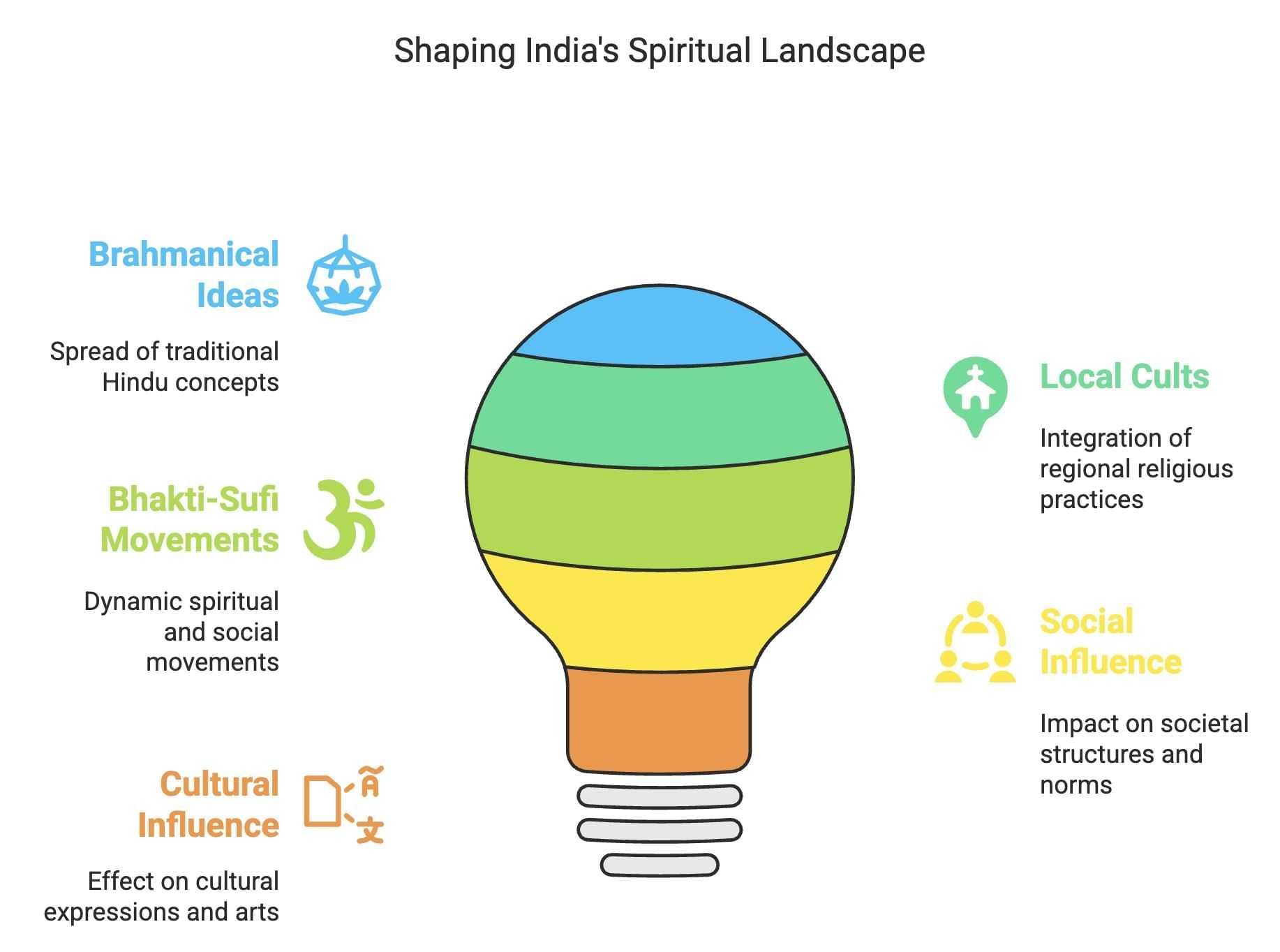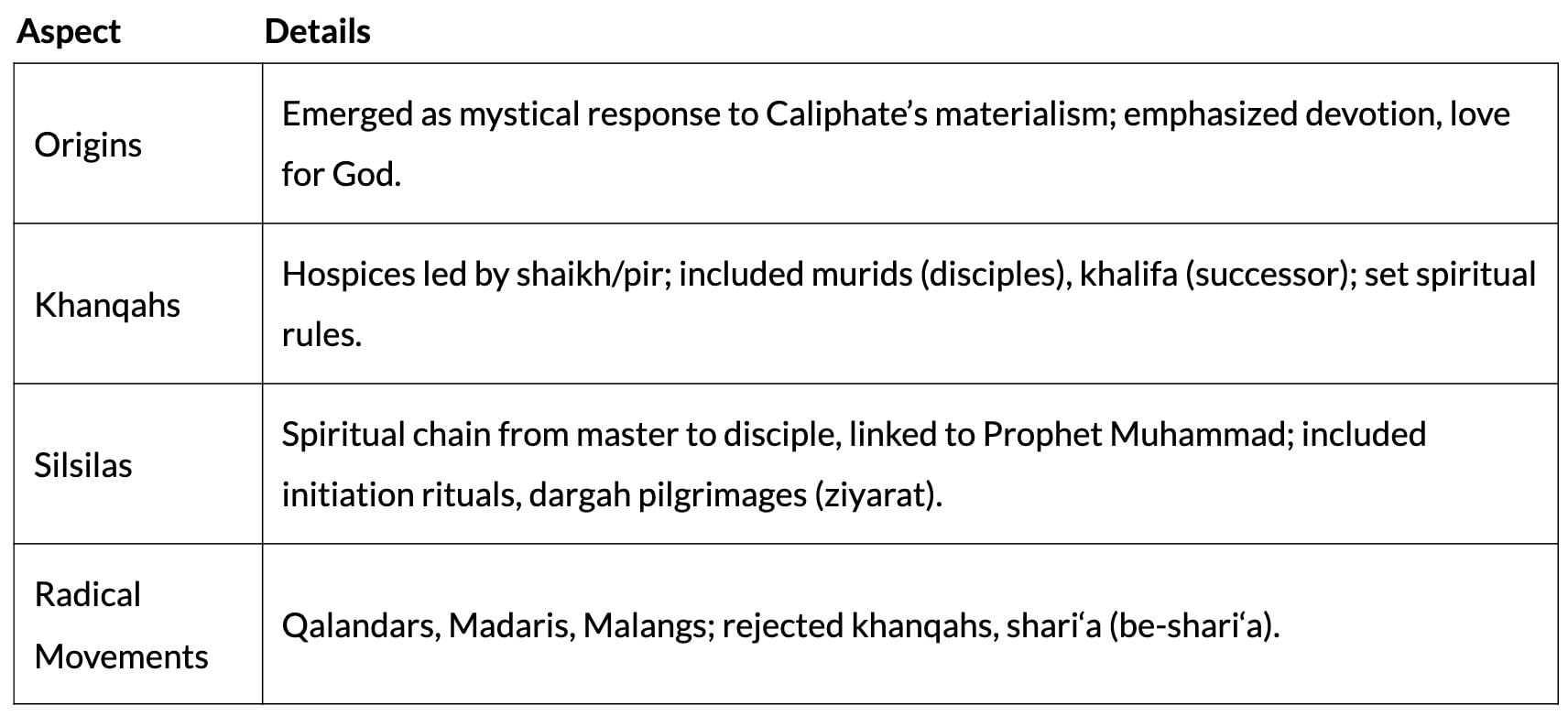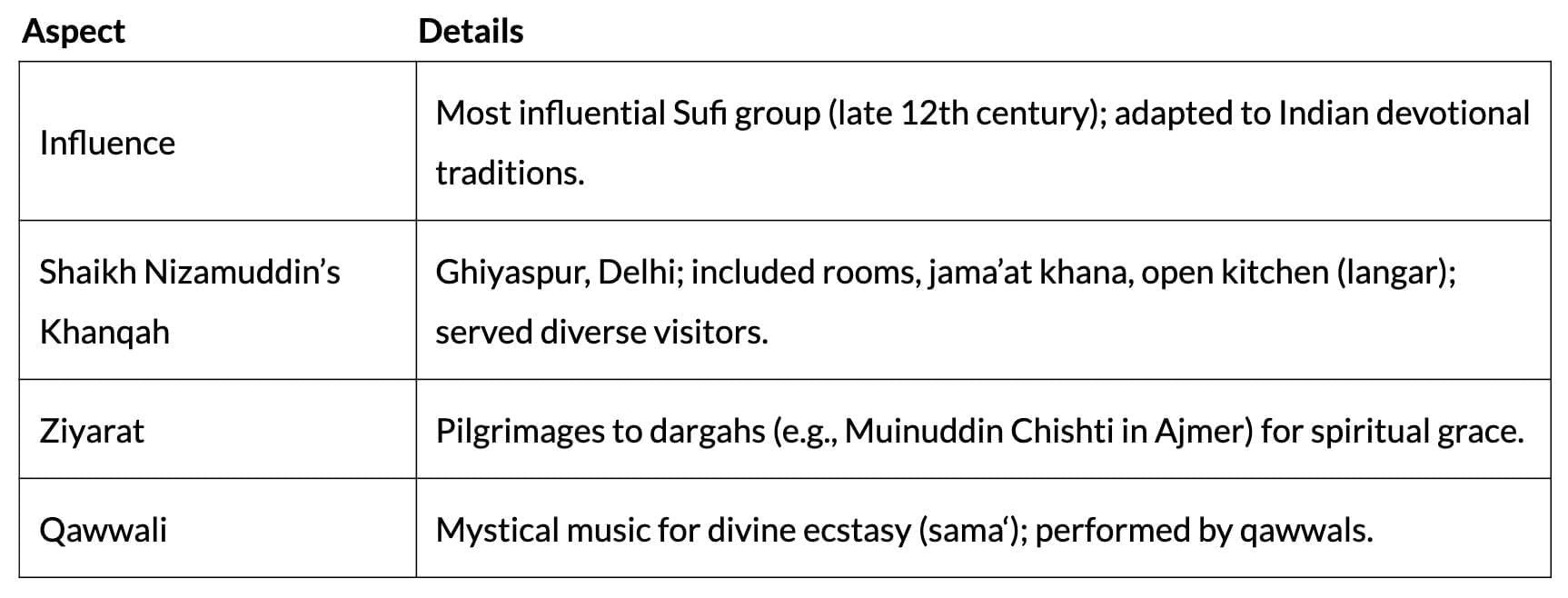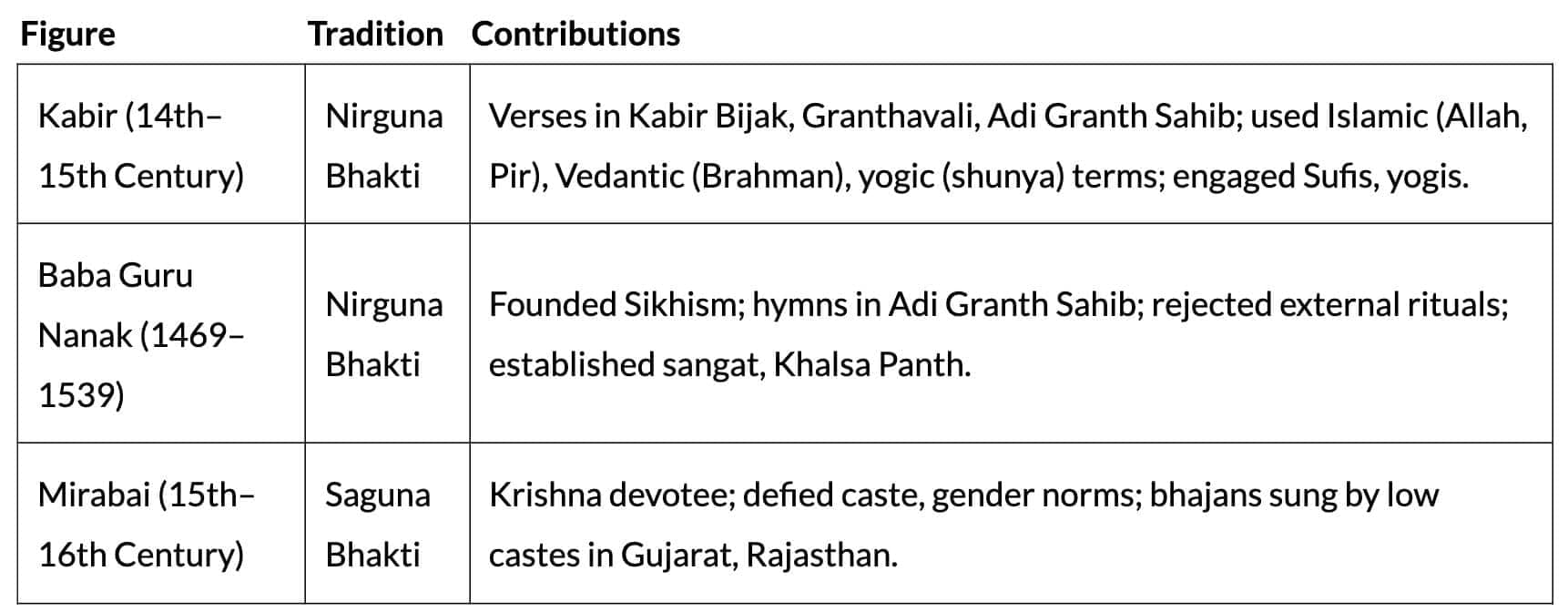Humanities/Arts Exam > Humanities/Arts Notes > History Class 12 > Cheat Sheet: Bhakti-Sufi Traditions
Cheat Sheet: Bhakti-Sufi Traditions | History Class 12 - Humanities/Arts PDF Download

A Mosaic of Religious Beliefs and Practices
Integration of Cults

Difference and Conflict
- Tantric Practices: Inclusive, goddess-focused, transcended caste/class.
- ‘Hindu’ Classification: Encompassed Vedic, Puranic traditions; Vedic deities marginalised.
- Conflicts: Tensions over Vishnu/Shiva supremacy; rivalry with Buddhism, Jainism.
- Devotional Worship: Ranged from temple rituals to ecstatic trance-like states.
Poems of Prayer: Early Bhakti Traditions

The Alvars and Nayanars of Tamil Nadu

- Caste Attitudes: Included diverse groups; Nalayira Divyaprabandham (Alvars) called Tamil Veda.
- Women Devotees: Andal (Vishnu’s beloved), Karaikkal Ammaiyar (Shiva); defied patriarchal norms.
- State Relations: Pallavas, Pandyas, Cholas supported bhakti; Cholas built Shiva temples, used Tevaram hymns.
The Virashaiva Tradition in Karnataka

Religious Ferment in North India

Islamic Traditions
Faiths of Rulers and Subjects

Popular Practice of Islam
- Core Tenets: Shahada, salat, zakat, sawm, hajj.
- Sectarian Affiliations: Sunni, Shi‘a shaped local practices.
- Regional Integration: Malabar Muslims adopted matriliny, matrilocal residence.
- Mosque Architecture: Universal features (mihrab, minbar); regional styles in materials, decoration.
The Growth of Sufism

The Chishtis in the Subcontinent

- Languages: Used Hindavi, Dakhani; Baba Farid, Amir Khusrau’s poetry in Guru Granth Sahib; Padmavat by Jayasi.
- Sufis and State: Accepted ruler donations; rulers sought legitimacy via Sufi support, auqaf, inam lands.
New Devotional Paths in North India

Reconstructing Histories of Religious Traditions

Conclusion
Bhakti and Sufi traditions, through poet-saints like Kabir, Guru Nanak, and Mirabai, and institutions like Chola temples and Chishti khanqahs, wove a complex religious tapestry. Their dialogues, dissent, and inclusivity shaped India’s spiritual landscape, leaving a resilient legacy of cultural unity and diversity.
The document Cheat Sheet: Bhakti-Sufi Traditions | History Class 12 - Humanities/Arts is a part of the Humanities/Arts Course History Class 12.
All you need of Humanities/Arts at this link: Humanities/Arts
|
30 videos|274 docs|25 tests
|
FAQs on Cheat Sheet: Bhakti-Sufi Traditions - History Class 12 - Humanities/Arts
| 1. What are the main characteristics of the Bhakti traditions in India? |  |
Ans. The Bhakti traditions in India emphasize personal devotion to a deity, often through heartfelt prayers, songs, and rituals. Key characteristics include the rejection of caste hierarchies, the promotion of equality among devotees, and an emphasis on emotional connection with the divine. These traditions often featured poets and saints who expressed their devotion through poetry and music, making spirituality accessible to all.
| 2. Who were the Alvars and Nayanars, and what role did they play in Tamil Nadu's religious landscape? |  |
Ans. The Alvars and Nayanars were prominent saint-poets in Tamil Nadu who contributed significantly to the Bhakti movement. The Alvars were devoted to Lord Vishnu, while the Nayanars were devoted to Lord Shiva. Their compositions, known as "prabandham" for Alvars and "tevaram" for Nayanars, played a crucial role in popularizing devotional worship and shaping the religious identity of Tamil Nadu, emphasizing love, devotion, and emotional connection to the divine.
| 3. How did the Virashaiva tradition in Karnataka influence religious practices? |  |
Ans. The Virashaiva tradition, founded by the saint Basava in Karnataka, emphasized devotion to Lord Shiva and promoted a distinct philosophy that challenged existing social norms, including caste discrimination. It encouraged a personal relationship with God, rituals, and community participation, leading to the establishment of the Lingayat community. This tradition fostered a spirit of inclusivity and social reform, influencing broader religious practices in the region.
| 4. What is the significance of Sufism in the Islamic traditions of the Indian subcontinent? |  |
Ans. Sufism represents the mystical dimension of Islam, focusing on the inward search for God and the cultivation of personal spirituality. In the Indian subcontinent, Sufi saints like the Chishtis emphasized love, tolerance, and service to humanity. Their teachings promoted communal harmony and attracted followers from diverse backgrounds, contributing to a rich syncretic culture that blended Islamic and local traditions.
| 5. How did new devotional paths emerge in North India during the Bhakti movement? |  |
Ans. New devotional paths in North India emerged as a response to the rigidities of established religious practices. Saints like Kabir, Mira Bai, and Tulsidas articulated a vision of spirituality that transcended formal rituals and emphasized direct, personal devotion. These movements encouraged followers to seek God through love and devotion rather than through traditional rites, leading to a broader acceptance of diverse practices and beliefs within the religious landscape.
Related Searches
















